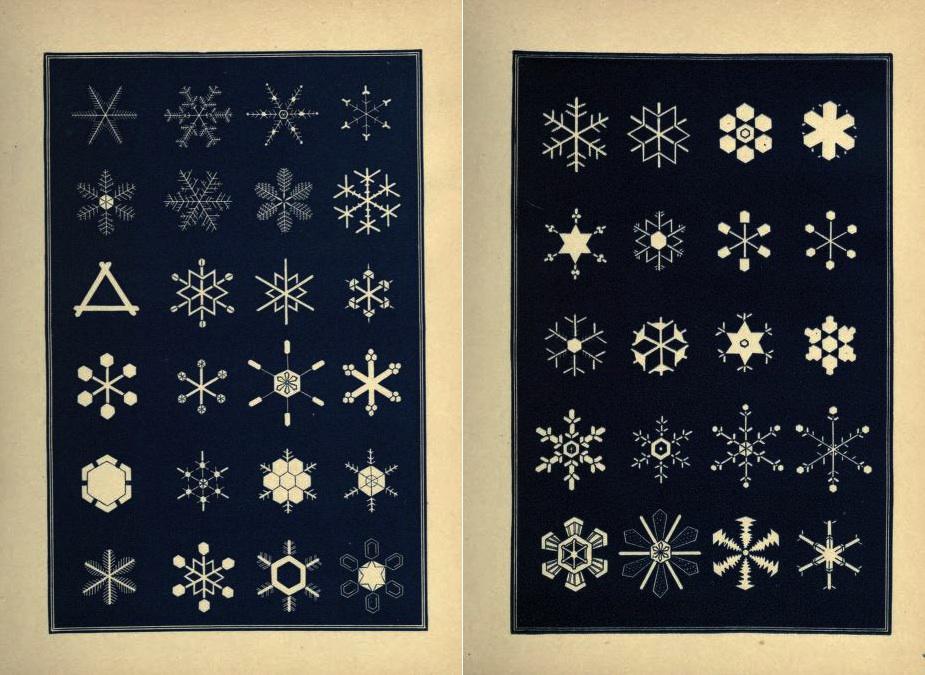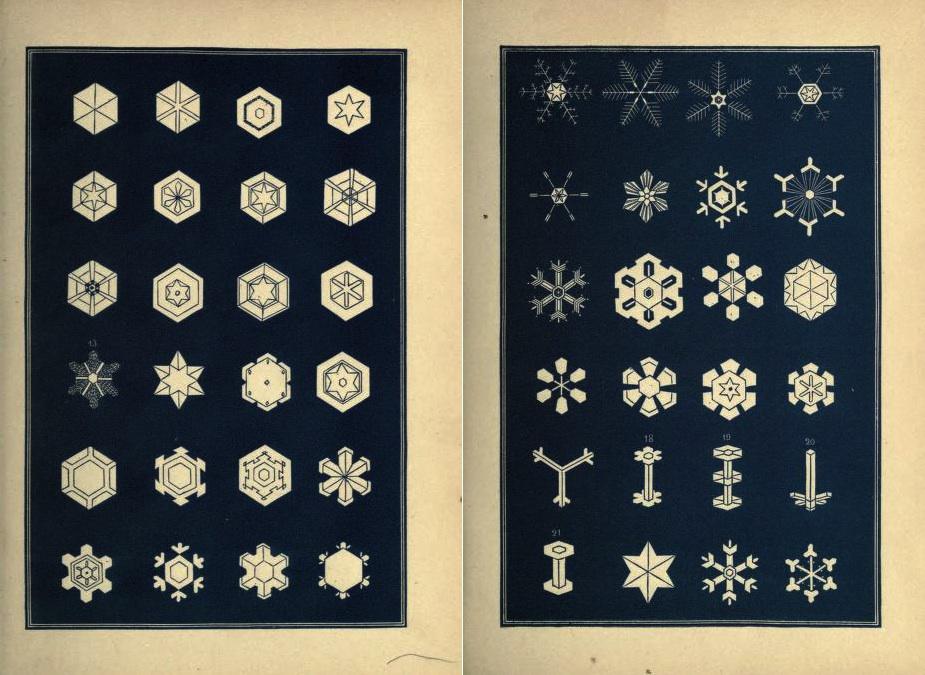The Vault is Slate’s history blog. Like us on Facebook, follow us on Twitter @slatevault, and find us on Tumblr. Find out more about what this space is all about here.
These plates, cataloging the geometrical forms of snowflakes, are from an 1863 book called Snow-flakes: A Chapter from the Book of Nature, published by the American Tract Society in Boston. I first saw the images on the Public Domain Review.
The tract’s authors credited earlier artists’ renderings of snowflakes in their preface, writing that the work of three such illustrators—the 18th-century Dutch physician John Nettis, the early-19th-century Arctic explorer William Scoresby, and their contemporary, British astronomer and meteorologist James Glaisher—formed the source material for their engravings.
These navy-and-white snowflake graphics illustrated a book that was a compendium of republished writings about snow. In poetry and prose, the authors celebrated snowfall as a sign of God’s mercy, genius, and design. In this, they echoed a widespread Victorian tendency to see confirmation of religious beliefs in the works of nature.
“Obedience to law is apparent in all the works of the Creator,” an author surnamed Kirk wrote. (The compilers gave only partial credit to some of the authors, assuming familiarity in the tract’s audience; I can guess at some names, but am at a loss over others.) “However varied or complicated their structure, however intricate their motions, however multiform their aspects, there is an all-wise design pervading them.” Snowflakes always crystallized “in three, or some multiple of three,” a design that echoed the Trinity: “Every snow-flake imitates its Creator by being three in one.”
Snow was also a sign of God’s forgiveness, blanketing ugly and frozen earth and making it beautiful. The author “Beecher” (probably the minister Henry Ward) likened the transformation of the world under a blanket of fallen snow to God’s “divine charity,” which could cover a “multitude of sins.”
In later years, investigators would make photographs of snowflakes using microscopes. Vermont farmer Wilson Bentley did this over decades, Keith C. Heidorn explains elsewhere on the Public Domain Review, finding the subject so fascinating that he dedicated all of his free time to the effort.

Internet Archive.

Internet Archive.

Internet Archive.

Internet Archive.

Internet Archive.